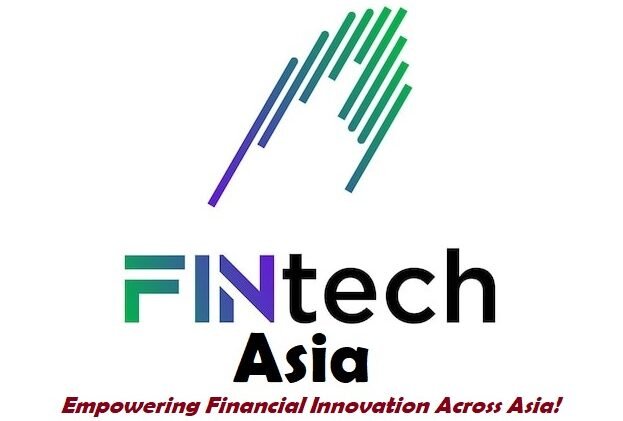Market Trends in FTAsiaFinance: A Comprehensive Analysis
The global financial landscape is rapidly evolving, and the dynamics within the Asian markets are playing a pivotal role in shaping the future. FTAsiaFinance, a key player in Asia’s financial ecosystem, has become a central hub for analyzing trends, investments, and financial opportunities in the region. Understanding the market trends within FTAsiaFinance offers a window into how businesses, investors, and policymakers are responding to global economic shifts, regional economic policies, and technological advancements. This article delves into the significant market trends in FTAsiaFinance and how they are influencing Asia’s financial future.
1. The Rise of Digital Finance
One of the most significant trends shaping the FTAsiaFinance landscape is the rapid adoption of digital financial technologies. As fintech continues to disrupt traditional financial services, Asia, particularly countries like China, Singapore, and India, has emerged as a hotbed for innovation. Mobile banking, digital wallets, and blockchain technology are revolutionizing payment systems and investment platforms across the continent.
- Mobile Banking and Digital Wallets: Mobile penetration in Asia is high, and with it comes the increasing use of mobile banking and digital wallets. Platforms like Alipay, Paytm, and GrabPay have transformed the way individuals and businesses conduct financial transactions. FTAsiaFinance has noted a surge in mobile wallet usage, especially in developing economies where banking infrastructure is still in development.
- Blockchain and Cryptocurrencies: Blockchain technology is providing a new level of security and transparency to financial transactions. The rise of cryptocurrencies in Asian markets, such as Bitcoin, Ethereum, and regional tokens, has gained momentum. FTAsiaFinance has recognized the role of blockchain in creating decentralized financial systems, which are increasingly becoming part of mainstream financial services.
2. Sustainable Finance and Green Investments
As the world focuses on sustainability and environmental responsibility, FTAsiaFinance has observed a growing trend in green finance and sustainable investments. Asian countries are playing a vital role in promoting environmentally friendly investments and are shifting toward policies that favor sustainability.
- ESG Investments (Environmental, Social, and Governance): Investors in Asia are more focused on aligning their portfolios with ESG criteria. FTAsiaFinance reports that there has been a notable shift in capital flow towards green bonds, renewable energy projects, and companies that adhere to sustainability standards. Governments are incentivizing corporations to adopt cleaner and more ethical practices, which is driving this trend.
- Sustainable Infrastructure Development: With rapid urbanization in Asia, sustainable infrastructure is becoming a focus area for long-term economic growth. Investment in green technologies, energy-efficient buildings, and smart cities are part of the FTAsiaFinance trend in creating a sustainable future.
3. Economic Diversification and Regional Integration
FTAsiaFinance highlights economic diversification and regional integration as a growing trend across Asian markets. Countries are shifting their reliance from single-sector economies to more diverse industries. At the same time, regional economic partnerships are strengthening the interconnectedness of Asian financial markets.
- Diversification of Economies: Countries like Indonesia, Malaysia, and Thailand are moving away from resource-based economies to more diversified sectors such as technology, manufacturing, and services. This shift is driven by the desire for economic resilience in the face of global uncertainties like fluctuating commodity prices and trade tensions.
- Regional Trade Agreements: Trade agreements such as the Regional Comprehensive Economic Partnership (RCEP) are driving integration across Asian markets. FTAsiaFinance notes that these agreements are encouraging trade liberalization, enhancing market access, and fostering closer economic ties between nations like China, Japan, South Korea, and ASEAN members.
4. Private Equity and Venture Capital Growth
Asia’s private equity (PE) and venture capital (VC) markets have seen exponential growth over the past decade. FTAsiaFinance underscores how investors are increasingly looking towards Asian startups, especially in technology, health care, and clean energy sectors, to secure future returns.
- Tech and E-commerce Startups: Asia’s vibrant tech and e-commerce sectors, especially in countries like China and India, are attracting significant PE and VC investments. Startups in fintech, artificial intelligence (AI), and biotechnology have piqued the interest of global investors looking for high-growth opportunities. FTAsiaFinance has noted an influx of foreign capital seeking exposure to Asia’s burgeoning tech ecosystem.
- Expansion of Unicorns: Asia is home to a growing number of unicorns (startups valued over $1 billion). Companies like ByteDance, Grab, and OYO Rooms exemplify the region’s capacity to produce global leaders in innovation. FTAsiaFinance predicts that the number of unicorns will continue to grow as more investors recognize the potential of Asian markets.
5. Impact of Geopolitical Tensions on Financial Markets
Geopolitical tensions in Asia, particularly those involving China, the United States, and other global powers, have significantly impacted market trends. FTAsiaFinance provides insights into how these tensions are influencing financial markets and investor sentiment.
- US-China Trade War: One of the most notable geopolitical events in recent history is the ongoing trade war between the United States and China. The tariffs and retaliatory measures imposed by both nations have created volatility in global markets, with FTAsiaFinance observing fluctuations in currency exchange rates, stock market performances, and trade volumes.
- Global Supply Chain Disruptions: The COVID-19 pandemic, coupled with geopolitical conflicts, has led to disruptions in global supply chains. Asian markets, especially those dependent on exports, have been affected. FTAsiaFinance reports that businesses are now focusing on creating more resilient supply chains, with some opting for regionalization to reduce dependency on volatile international markets.
6. Technological Advancements and Financial Innovation
Technological innovation continues to be a driving force behind market trends in FTAsiaFinance. Asia, as a leader in tech development, is integrating artificial intelligence, machine learning, and big data analytics into the financial industry.
- AI and Machine Learning in Finance: FTAsiaFinance is tracking how AI and machine learning are transforming risk management, customer service, and investment strategies. AI-driven financial services are enabling faster, more accurate decision-making processes, particularly in asset management and fraud detection.
- Robo-Advisors: A growing trend in Asia is the use of robo-advisors, which are automated platforms that provide financial advice based on algorithms. These platforms are particularly popular among younger, tech-savvy investors who are looking for low-cost investment options.
7. Increased Focus on Financial Inclusion
Financial inclusion is becoming a key priority in Asia as millions of individuals in developing economies still lack access to formal financial services. FTAsiaFinance is actively monitoring initiatives aimed at expanding access to banking, credit, and investment opportunities for underserved populations.
- Microfinance and Digital Lending: Microfinance institutions and digital lending platforms are expanding their reach to provide financial services to unbanked populations. In countries like Bangladesh and India, microfinance has been a critical tool for alleviating poverty and fostering economic development. FTAsiaFinance highlights the role of digital lending platforms in democratizing access to credit.
- Inclusive Insurance Products: Another important trend is the development of affordable and accessible insurance products for low-income households. By offering micro-insurance and health insurance products, Asian markets are addressing the needs of vulnerable populations and enhancing financial security.
Conclusion
Market trends in FTAsiaFinance reflect a complex interplay of technological advancements, regional economic shifts, and global influences. As digital finance, sustainable investments, and technological innovations continue to shape the financial landscape in Asia, FTAsiaFinance provides invaluable insights into how these trends will impact future growth. With an increasing focus on financial inclusion, sustainable development, and economic diversification, Asia’s financial markets are set to play a central role in global finance for years to come. Investors, policymakers, and businesses must remain vigilant and adaptive to capitalize on the opportunities that arise from these emerging trends.



